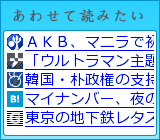This article is about the large number. For the Internet company and search engine, see Google. For the author, see Nikolai Gogol.
A googol is the large number 10100, that is, the digit 1 followed by one hundred zeros (in decimal representation). One googol is written as: 10,000,000,000,000,000,000,000,000,000,000,000,000,000,000,000,000,000,000,000,000,000,000,000,000,000,000,000,000,000,000,000,000,000. The term was coined in 1920 by nine-year-old Milton Sirotta, nephew of American mathematician Edward Kasner. Kasner popularized the concept in his book Mathematics and the Imagination.
A googol is of the same order of magnitude as the factorial of 70 (70! being approximately 1.198 googol, or 10 to the power 100.0784), and its only prime factors are 2 and 5 (100 of each). In binary it would take up 333 bits.
The googol is of no particular significance in mathematics, but is useful when comparing with other incredibly large quantities such as the number of subatomic particles in the visible universe or the number of possible chess games. Kasner created it to illustrate the difference between an unimaginably large number and infinity, and in this role it is sometimes used in teaching mathematics. Indeed, it is not even a round figure. Its formal name is ten duotrigintillion.
The Internet search engine Google was named after this number. Larry Page, one of the founders, was fascinated with mathematics and "Googol," even during high school. They ended up with "Google" due to a spelling mistake.
The word "google" or "googol," regardless of spelling, suggests the wide-eyed look of a baby, and the comic strip character Barney Google who began appearing in the 1910s
A googol is the large number 10100, that is, the digit 1 followed by one hundred zeros (in decimal representation). One googol is written as: 10,000,000,000,000,000,000,000,000,000,000,000,000,000,000,000,000,000,000,000,000,000,000,000,000,000,000,000,000,000,000,000,000,000. The term was coined in 1920 by nine-year-old Milton Sirotta, nephew of American mathematician Edward Kasner. Kasner popularized the concept in his book Mathematics and the Imagination.
A googol is of the same order of magnitude as the factorial of 70 (70! being approximately 1.198 googol, or 10 to the power 100.0784), and its only prime factors are 2 and 5 (100 of each). In binary it would take up 333 bits.
The googol is of no particular significance in mathematics, but is useful when comparing with other incredibly large quantities such as the number of subatomic particles in the visible universe or the number of possible chess games. Kasner created it to illustrate the difference between an unimaginably large number and infinity, and in this role it is sometimes used in teaching mathematics. Indeed, it is not even a round figure. Its formal name is ten duotrigintillion.
The Internet search engine Google was named after this number. Larry Page, one of the founders, was fascinated with mathematics and "Googol," even during high school. They ended up with "Google" due to a spelling mistake.
The word "google" or "googol," regardless of spelling, suggests the wide-eyed look of a baby, and the comic strip character Barney Google who began appearing in the 1910s


![Googol.twn [beta]](http://feeds.feedburner.com/Googoltwn.1.gif)
No comments:
Post a Comment